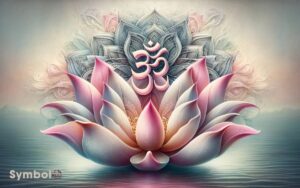What Does the Chrysanthemum Flower Symbolize? Longevity!
You’ll discover the chrysanthemum flower symbolizing a vast array of concepts, deeply rooted in cultural traditions.
Originating in Chinese culture, it represents longevity, rejuvenation, and nobility with its varied hues and forms depicting mourning, grief, prosperity, and loss differently across cultures.
In Japan, its significance interlocks with cultural and political identity, embodying life, death, and rebirth within the Imperial Seal. Scientific analysis reveals its role in triggering positive psychological responses by reducing stress and promoting mental relaxation.
Its autumn bloom signifies growth and regenerative power, making it a vibrant metaphor for life’s persistent evolution. Exposing more about this flower exposes its intricate connection with human emotion and societal values.

Key Takeaways
Origins in Chinese Culture
The chrysanthemum flower, revered in Chinese culture for millennia, embodies complex symbolism and holds a pivotal role in traditional festivals and ceremonies.
You’ll find that its origins trace back to ancient China, where it was first cultivated. It represents longevity, rejuvenation, and nobility, a demonstration to its enduring presence in Chinese lore.
The chrysanthemum’s introduction into gardens and medicinal practices underscores a deep-seated appreciation for its versatility and aesthetic. Scientifically, its cultivars vary greatly, reflecting the depth of its integration into the cultural fabric.
Analyzing its symbolism offers insights into Chinese values, where the flower’s resilience mirrors the societal emphasis on harmony and endurance. Its presence in art and literature further cements its status, making it an enduring symbol of the Chinese spirit.
Significance in Japan
Moving beyond its revered status in Chinese culture, chrysanthemums hold significant symbolism in Japan, where they embody the emperor and the imperial family’s longevity and happiness.
In Japan, this flower isn’t merely a symbol; it’s an integral part of the nation’s cultural and political identity. The chrysanthemum’s presence in the Imperial Seal of Japan underscores its paramount importance.
Scientically, the genus Chrysanthemum is diverse, yet in Japan, certain cultivars have been selectively bred for centuries, emphasizing traits that resonate with cultural values, such as perfection and longevity.
Analyzing the flower’s role in Japanese culture reveals a deep, multifaceted symbolism, intertwining aspects of life, death, and rebirth, reflecting the cyclical nature of the imperial lineage and, by extension, the nation itself.
Symbolism Across Cultures
Why do chrysanthemums carry different meanings across cultures, reflecting a range of values from life to death, prosperity to loss? This variation arises primarily from the flower’s diverse appearances and colors, which have been interpreted based on local traditions and beliefs.
In some cultures, the chrysanthemum is a symbol of mourning and grief, often used in funerals or to honor the deceased. This association with death might stem from its blooming in autumn, a season that metaphorically signifies the end of life.
Conversely, in other contexts, chrysanthemums symbolize honesty, integrity, and the return of a friend. These interpretations highlight the flower’s versatility and its ability to embody complex human emotions and societal values, making it a rich subject for cultural analysis.
Representations of Life
In examining the symbolism of chrysanthemums, it’s important to explore how these flowers represent life across various cultures, reflecting a deep-rooted appreciation for vitality and renewal.
Scientifically, the chrysanthemum’s ability to bloom in the autumn, a period often associated with decay, symbolizes the cycle of growth and regeneration.
This botanical phenomenon suggests resilience and the rebirth of life, concepts that resonate with human experiences of overcoming challenges. Culturally, their vibrant colors and robust nature are seen as embodiments of joy and the essence of life’s beauty.
Analytically, the flower’s diverse varieties and adaptability further emphasize its role as a symbol of life’s complexity and the potential for transformation. Therefore, chrysanthemums serve as a powerful metaphor for life’s enduring and ever-changing nature.
Associations With Death
Paradoxically, while chrysanthemums symbolize life and renewal in some cultures, they also hold deep associations with death and mourning in others.
This dichotomy is particularly accentuated in several Asian countries, where white chrysanthemums are mainly used in funerals and grave visitations. The flower’s association with death isn’t arbitrary but deeply ingrained in historical traditions and beliefs.
Scientific analysis explains this symbolism through the flower’s perennial nature, blooming in autumn when many other plants are dying, thereby becoming a symbol of the afterlife and respect for the deceased.
Culturally, the chrysanthemum’s purity and elegance are thought to honor the departed, embodying grief and the beauty of life’s impermanence.
This multifaceted symbolism highlights the flower’s role in maneuvering the complex emotions surrounding death.
Themes of Rebirth
You’ll find that chrysanthemums carry profound themes of rebirth across various cultures, embodying cycles of renewal and regeneration. Their symbolic meanings often reflect notions of starting anew, with specific colors and forms signifying different aspects of rebirth.
Analyzing these cultural significances provides insights into how societies perceive and integrate the concept of rebirth through the lens of this versatile flower.
Cultural Significance
Chrysanthemums symbolize rebirth across various cultures, reflecting profound themes of renewal and regeneration.
This symbolism is deeply embedded in the flower’s botanic characteristics and its perennial life cycle, which showcases a remarkable ability to return with vibrant blooms each year.
The flower’s resilience and its cycle of blooming, wilting, and blooming again offer a powerful metaphor for the cycles of life, death, and rebirth.
| Culture | Season of Rebirth | Symbolic Interpretation |
|---|---|---|
| Japanese | Autumn | Regeneration and longevity |
| Chinese | Autumn | Renewal of life and vitality |
| Victorian | Various | Rebirth of joy and happiness |
| Ancient Greek | Various | Renewal of health and recovery |
| Modern Western | Various | A fresh start or new beginning |
Analyzing these cultural significances, you grasp the chrysanthemum’s universal appeal as a symbol of rebirth, transcending geographical and temporal boundaries.
Symbolic Meanings
Delving into the symbolic meanings of the chrysanthemum, we find themes of rebirth that resonate deeply across different cultures and epochs. This perennial flower, with its cycle of blooming in the fall, embodies the idea of regeneration and renewal.
Scientifically, the chrysanthemum’s ability to bloom as temperatures drop is a confirmation of its resilience and represents a natural cycle of revival.
Culturally, it’s often associated with the idea of life emerging anew, making it a potent symbol in ceremonies that emphasize beginnings, be it a new year or a phase of life.
Analyzing its role in these contexts, you’ll discover a nuanced representation of how rebirth is celebrated and revered, offering a unique lens through which to understand human values and aspirations.
Expressions of Joy
You’ll find that chrysanthemums hold a rich celebratory cultural significance, often symbolizing joy in various societies. Their role in personal happiness symbolism is rooted in their vibrant colors and diverse forms, analyzed through socio-cultural lenses.
Additionally, their usage in festive occasions underlines their capacity to embody and enhance celebratory atmospheres scientifically.
Celebratory Cultural Significance
In various cultures, the chrysanthemum embodies expressions of joy, symbolizing celebrations from birth to marriage with its vibrant blooms.
This flower’s color diversity plays a critical role in its symbolism; for instance, red chrysanthemums are often associated with love and joyous occasions, making them a popular choice for weddings and anniversaries.
White varieties, representing purity and loyalty, are frequently used in birth celebrations.
Scientific analysis reveals that the flower’s wide range of colors is due to anthocyanins and carotenoids, compounds which not only contribute to the chrysanthemum’s aesthetic appeal but also its adaptability to various celebratory contexts.
Culturally, these colors aren’t arbitrary but deeply embedded in the social fabric, serving as symbols that resonate with emotional and cultural significances tied to joyous events.
Personal Happiness Symbolism
Building on the multifaceted cultural significance of the chrysanthemum, its role in symbolizing personal happiness through expressions of joy further underscores the flower’s profound impact on individual emotions and experiences.
Scientifically, the visual appeal of chrysanthemums, characterized by their vibrant colors and intricate petal arrangements, triggers positive psychological responses in humans.
These responses are often linked to the release of serotonin, a neurotransmitter associated with feelings of well-being and happiness.
Moreover, the presence of chrysanthemums in personal spaces has been observed to reduce stress and promote mental relaxation, making them a natural emblem for joy.
This association isn’t merely anecdotal; it’s rooted in neuroscientific findings that underscore the flower’s capability to elevate personal mood and foster an environment conducive to happiness.
Festive Occasions Usage
Chrysanthemums’ vibrant presence at festive occasions often signifies joy, mirroring their role in elevating mood and enhancing celebratory atmospheres through their visually stimulating attributes.
Their unique characteristics contribute to their widespread use in expressions of joy across various cultures and festivities.
To understand this phenomenon, consider the following:
- Color Variability: Chrysanthemums come in a broad spectrum of colors, each capable of conveying a specific emotion or theme, making them suitable for a diverse range of festive occasions.
- Longevity: These flowers are renowned for their long-lasting nature, symbolizing enduring happiness and the continuation of celebration.
- Cultural Significance: In many cultures, chrysanthemums hold profound symbolic meanings—from life and rebirth to joy and prosperity—making them a preferred choice for festivals and joyful gatherings.
This multifaceted symbolism renders chrysanthemums as more than mere decorations, but as essential elements in the tapestry of festive celebration.
Connotations of Grief
Reflecting on cultural practices, you’ll find that chrysanthemums often symbolize grief, their presence in funerals and memorial services highlighting their role in expressions of sorrow and remembrance.
| Color | Cultural Significance | Psychological Impact |
|---|---|---|
| White | Purity, mourning in Eastern cultures | Soothes, offers peace |
| Red | Love, deep respect for the departed | Stimulates, evokes strong emotions |
| Yellow | Sorrow, neglected love in Western contexts | Invokes warmth, mixed feelings |
| Purple | Mourning, honor in many cultures | Calms, signifies dignity, respect |
This table elucidates how chrysanthemums, through their varied hues, communicate complex emotions associated with grief.
Each color not only carries cultural significance but also impacts psychological states, aiding in the process of mourning and remembrance.
Their role in expressing sorrow is not merely symbolic but also therapeutic, providing solace and a means to articulate deep-seated emotions without words.
Uses in Ceremonies and Traditions
Delving into cultural ceremonies and traditions, you’ll discover that chrysanthemums play pivotal roles, symbolizing various emotions and ideals across different societies.
These roles can be broken down into:
- Commemoration of the dead: In several cultures, chrysanthemums are integral to funeral rites and memorial services, representing lamentation or reverence for the departed.
- Celebrations of life: Contrary to their use in mourning, some traditions use chrysanthemums in festivals celebrating life, harvest, and prosperity, showcasing their versatility in symbolism.
- Ritual purification: In certain religious ceremonies, chrysanthemums are believed to possess purifying qualities, used in rituals to cleanse a space or person from negative energies, fostering a sanctified environment.
Understanding these uses underscores the chrysanthemum’s complex symbolism, bridging the gap between joy and sorrow, life and death.
Conclusion
You might argue that the chrysanthemum’s symbolism is overly complex, yet its multifaceted meanings underscore its significance across cultures. Essentially, it embodies the duality of life and death, joy and grief, reflecting natural processes with scientific precision.
Its use in ceremonies and traditions further highlights its role in human society, offering insights into cultural values and beliefs. Analyzing its symbolism reveals not just a flower, but a complex emblem of human emotions and the cycles of life.






